The history of the Schauinslandbahn
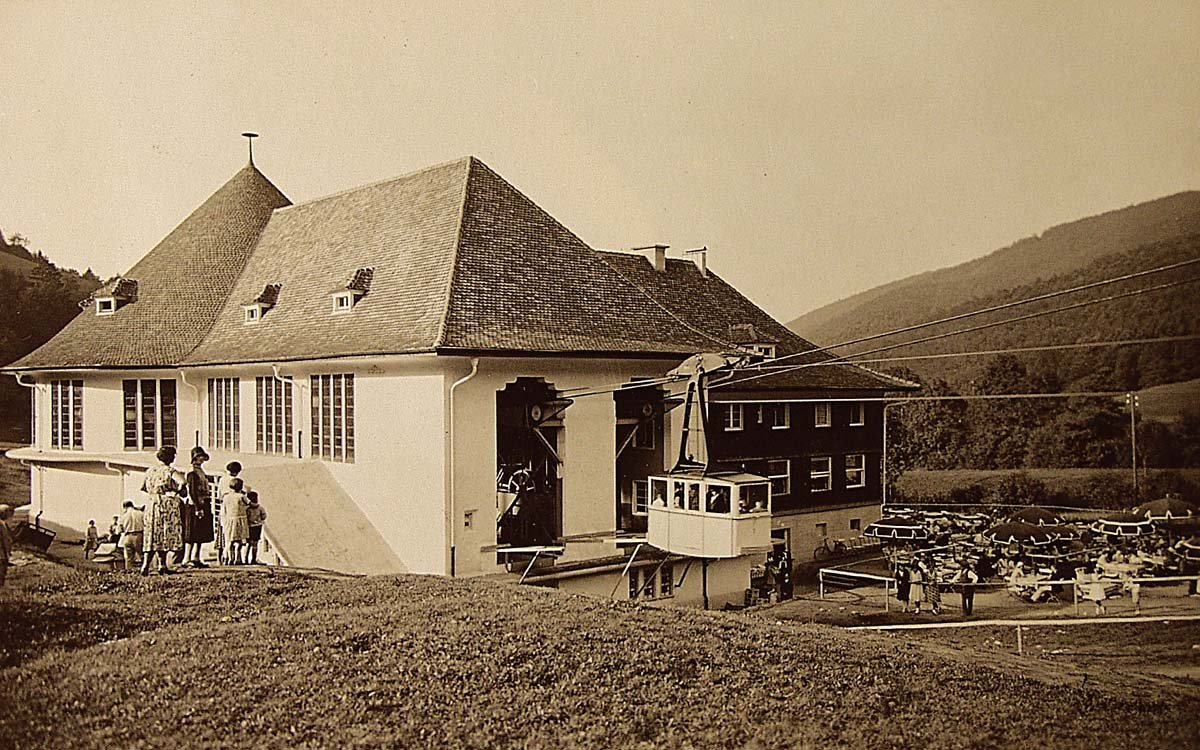
In 1893, the "Stadtrath" (city council) of Freiburg stated during an inspection of the forest and driving road to the Schauinsland: "This mountain must be made accessible to the general public." A bold idea that at first seemed impossible. But some 30 years later, the idea took shape. Find out here everything about the genesis of this extraordinary and, even back then, extremely innovative ropeway.
The construction 1929 - 1930
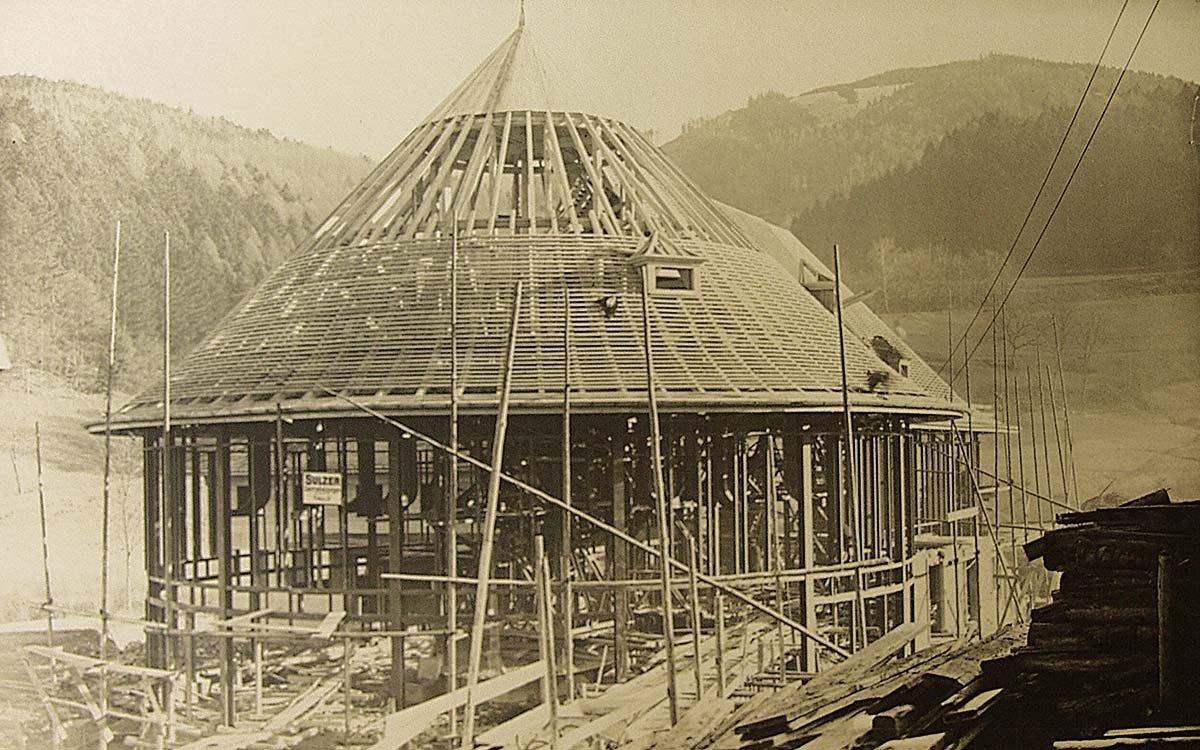
After many suggestions and ideas for the route, the Schauinslandbahn Studiengesellschaft was founded in 1925. After successful project planning, the construction committee approved the construction of a cableway to the Schauinsland on August 7, 1928. As a result, the Schauinslandbahn Aktiengesellschaft was founded on 19.12.1928, which was responsible not only for raising capital but also for planning and project management. The foundation stone for the large-scale project, which cost 2.15 million Reichsmarks, was laid on May 8, 1929. On March 12, 1930, the first cable drum with a carrying cable arrived at the loading ramp for furniture trucks at the Freiburg freight station. The enormous weight of 28 tons per reel could only be pulled by a powerful steam roller made by Nickel & Seitz. Seven steel supports with hauling rope sheaves and suspension rope supports serve as rope carriers along the entire route. The largest rope span is 734 m and the highest support is 37.5 m high. On April 27, 1930 - not quite three months before the opening - the last work on the supports was completed.
The opening 1930
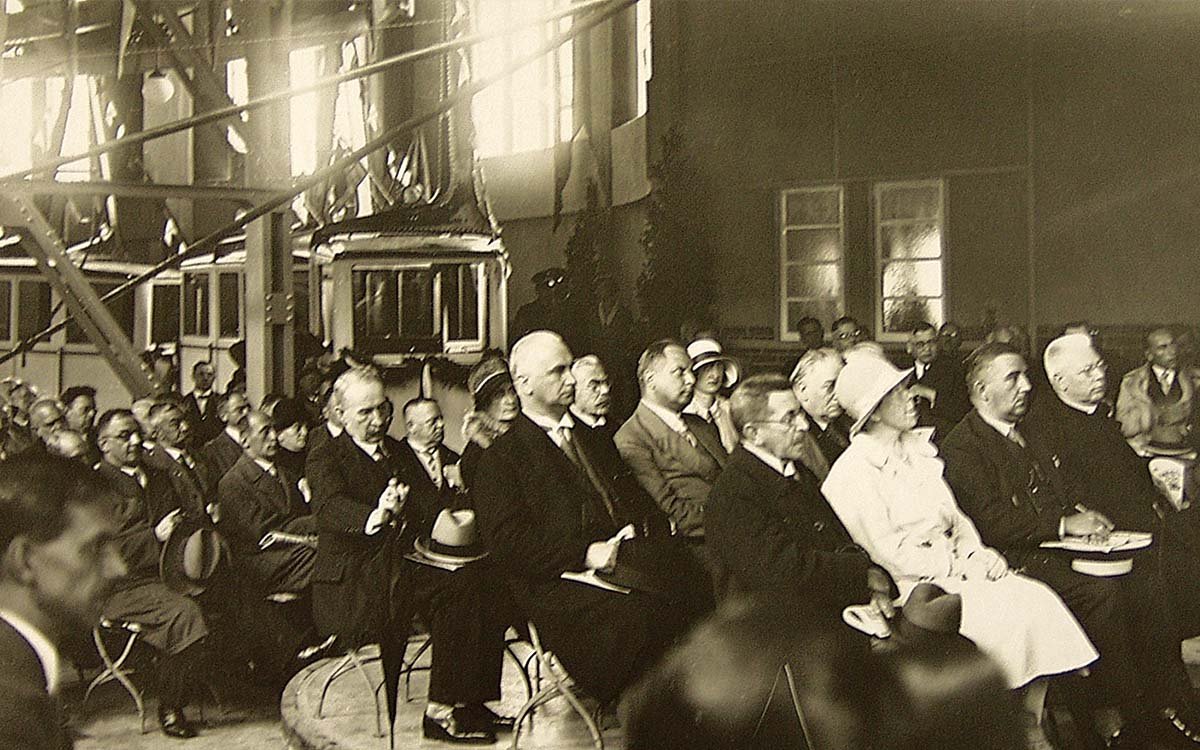
A big train station in the valley station. All those responsible, many dignitaries and guests of honor were invited to the opening ceremony on 17.7.1930. The Stadtgarten Orchestra underlined the festive mood with a divertimento by Wolfgang Amadeus Mozart until the arrival of cabin No. 1, which slowly floated into the valley station with young girls in traditional costumes from Horben and Hofsgrund, coming from the mountain station. At 11:44 a.m., the cabin, then occupied by Mayor Bender and many guests of honor, left the valley station for the first ascent to the sounds of the Germany song. The Schauinslandbahn is the world's first large-cabin circulating cable car capable of carrying large crowds. In 1930, the railroad was equipped with 10 "cars" accompanied by a conductor. Each cabin held 23 to 25 passengers and was luxuriously appointed according to the opinion of the time. There were six seats per cabin.
The cable car operation from 1930 - 1987
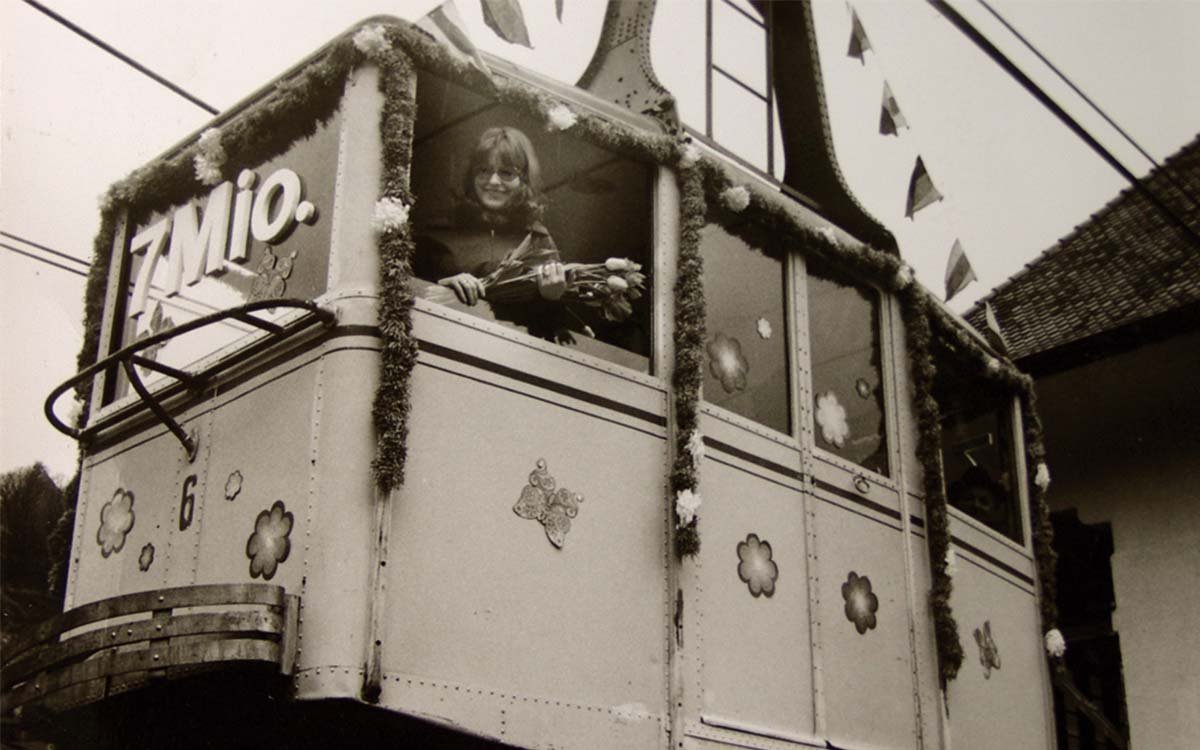
The Schauinslandbahn, attraction and center of attraction, was the fastest means of transport up the mountain in the 1940s. The journey time of 16 minutes was unrivaled and connected the people of Freiburg with the beautiful nature as well as with all hiking and winter sports opportunities.The Freiburg Tourist Office already mentioned in a letter to the city council in 1913: "With this railroad, one could show a landscape panorama in a short time and for little money, as it can probably be seen in few regions of Germany". During the war, the number of passengers increased to 240,000, although in 1944 and 1945, due to the permanent threat of air raids, the line could only be operated at night. Especially during this time, the Schauinslandbahn had an important task. Among other things, it had to supply the alternative hospitals set up on the mountain. On December 3, 1944, the university hospital housed in the Hotel Kyburg was attacked by airmen. Despite a strong storm, more than a hundred children were transported to emergency quarters on the mountain by the Schauinsland cable car that same night. In 1957, the joint stock company was converted into a limited liability company. The city of Freiburg took over all third-party shares until 1969 and was thus the sole shareholder. At the request of the city, the Freiburger Verkehrs AG then took over the shares of the Schauinslandbahn in 1982 and integrated the company into its corporation. In 1971, the Schauinslandbahn welcomed its 7 millionth passenger. But in 1986, after 56 years of operation and more than 12 million passengers carried, a new, more economical railroad concept had to be considered due to the large deficits and the old cabins that were in urgent need of renewal.
Major reconstruction in 1987
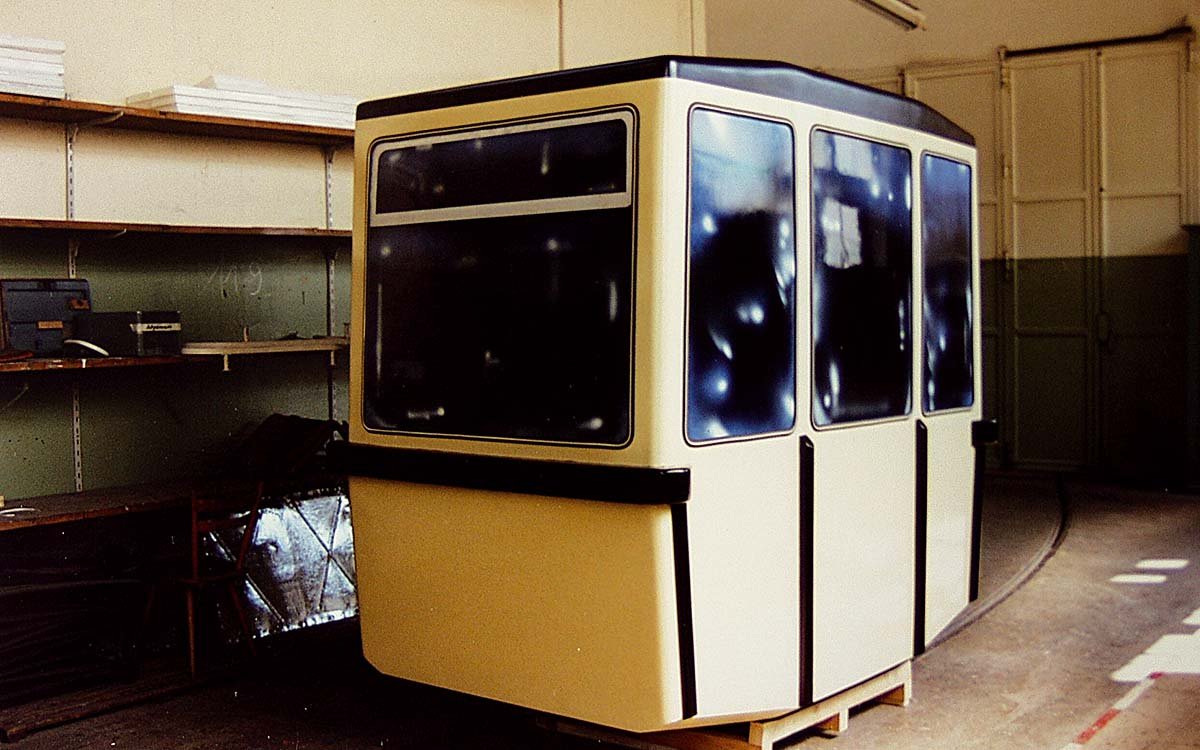
7 years after the 50th anniversary, the inevitable cut came on October 11, 1987. The supervisory authority no longer issued a new operating license. The ravages of time and severe corrosion had taken their toll on the cabins, and the control and safety equipment was no longer up to the latest standards. The operator, Freiburger Verkehrs AG, decided to convert the streetcar into a more efficient and economical streetcar without conductors and against the refurbishment demanded by many for reasons of historic preservation. The conversion costs amounted to DM 9 million. The new tramway was inaugurated by Mayor Dr. Rolf Böhme on December 6, 1988.
Extensive modernization 2012
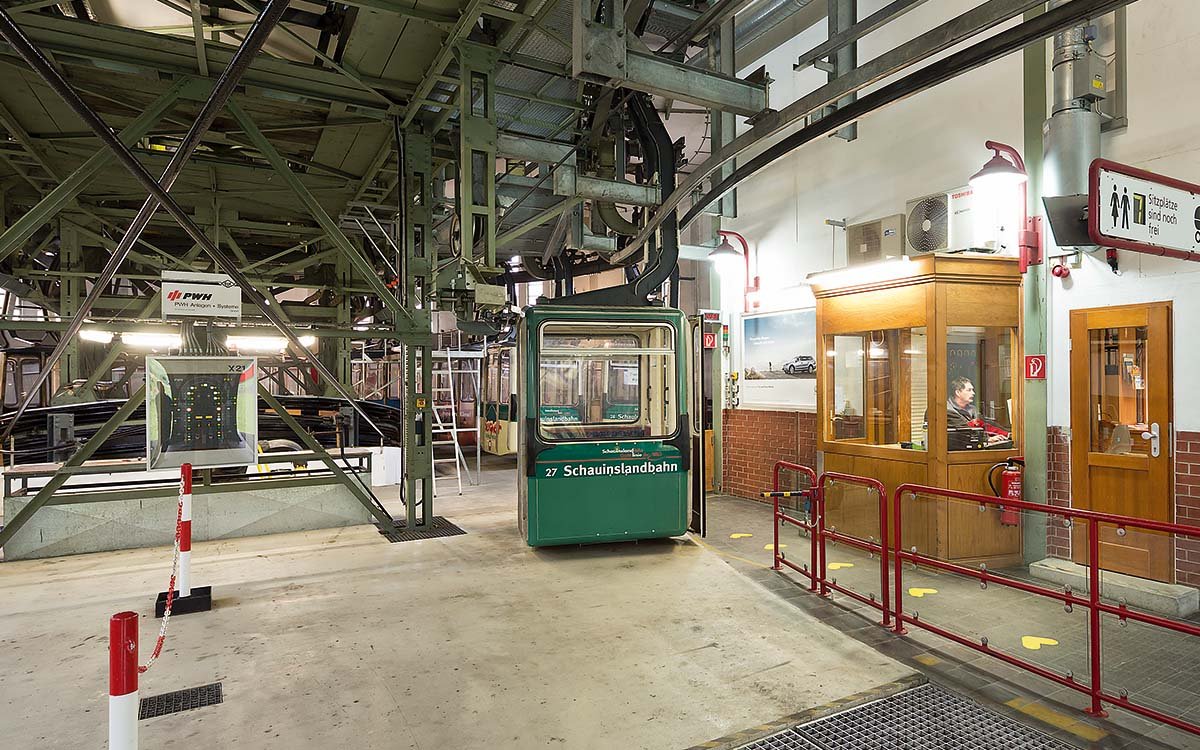
Around 25 years after the last conversion measures, one of the largest construction projects in the over 80-year history of the ropeway was realized between the end of 2012 and May 2013. As part of the modernization, the electrics, drive and brakes were brought up to the latest state of the art. In addition, two of the four suspension cables between the top and bottom stations were replaced by cables with integrated fiber optic cables. This ensures high-performance data transmission between the top and bottom stations. Passenger comfort has also been sustainably improved: For example, visitors with limited mobility are offered longer boarding and alighting times without having to reduce the speed of travel on the line. The vibration-free holding of the cabins also allows a smoother disembarkation. The extensive modernization measures cost around 3 million euros.
